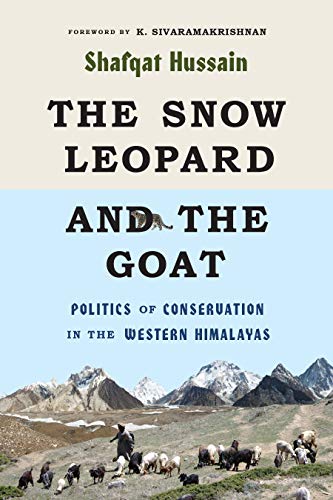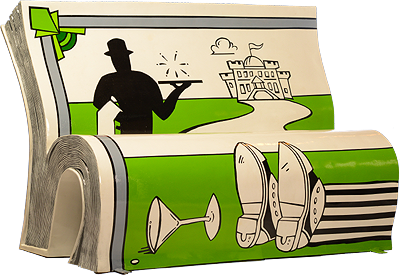I have had a chance to interact with some really great people in the blogging world and author Paulette Mahurin is one of those.
 Paulette Mahurin is a nurse practitioner, specializing in
Paulette Mahurin is a nurse practitioner, specializing in
women’s health in a rural clinic in where she lives with her husband and two
rescued dogs. She also taught in several college level nursing programs,
including UCLA, where she had a Master’s Degree in Nursing from their nurse
practitioner program. Her two passions are writing and rescuing dogs.While in
college she wrote and published two award winning non-fiction short stories.

The Persecution of Mildred Dunlap is set in a small Nevada town which has just received the news of Oscar Wilde’s imprisonment. It is the story of hatred and prejudice with all its unintended and devastating
consequences, and how love and friendship bring strength and healing.
All profits go Santa Paula Animal Rescue Center,
Ventura County, CA. (the first and only no-kill animal shelter in Ventura
County). For more info contact the author through Facebook. Buy a book; save a
life.
Paulette has agreed to feature here her wonderful article on tolerance.
Go ahead and read it!
_______________________________________________________________
First let me give a big heartfelt thank you to Priya, for
asking me back to your great blog site. I’m thrilled to be here with you, my
friend, thousands of miles away in geography but close at heart. When I mention
this heart connection I think of all the distance that exists between neighbors
living next door to each other, or perhaps even in the same home, when they
don’t possess this openness of spirit. So Priya, I dedicate this to you, in
India, and all our good friends who might stop by to comment, or share, in the
name of tolerance, in the name of our hearts opening, that we may know a more
harmony in this world.
I write so much about tolerance, the theme of my book, The
Persecution of Mildred Dunlap, but when I look at it, I don’t even know that I
fully understand what it is. Do I really understand the mechanism of bullying
another, putting another down because of their nature, the color of their skin,
their sexual preference, their religious beliefs, how they dress, you name it,
so many possibilities, so many differences that one could pick apart in the
other? Am I above all of it because I can talk about tolerance, write about it,
or am I just like Jose, the evil antagonist in my story, who finds fault with
everything Mildred Dunlap does? I think there’s a little, maybe even a lot, of
Josie in all of us. Reminds me of a quote from Jesus, he who is without sin among you, let him be the first to cast a stone… (John
8:7, New American Standard Bible).
Carl Jung wrote about our dark side, he called it our
shadow. Rumi, the poet, wrote that when
the totality that I am and my humanness meld, and then I am whole. Sri
Nisargadatta Maharaj wrote in his epic spiritual prose on non-dualistic existence
I Am That, and I paraphrase, “I am the space in which my mind and body
live.” Then there’s Krishnamurti who wrote, the thought is not the thing, which is reminiscent of Descartes, I think therefore I am. One of the most
fundamental spiritual questions, when in a deep introspective meditation is, who am I? Masters through the ages have pondered these
questions. Joseph Campbell in his famous talks on religion with Bill Moyer,
brings up a fundamental fact that what all religions have in common is their
mysticism, what Einstein called that point when reality becomes philosophy, the
point where nothing can be known.
From the perspective of these brilliant thinkers, past
leaders of all religious faiths, people of Letters, of education, and the
common man or woman who ponders life and the mysteries that abound; when I look
at anything from this perspective I can say for sure that the only truth I can
claim for certain is change, that nothing else seems certain but change. What
does all this have to do with hatred, intolerance?
If the greatest thinkers, who ever lived, are still alive,
and who have yet to be born, can’t answer any of these questions, then how the
hell can say we understand a thing about our very nature? If everything is a
mystery, from the mystery of the source that creates it all, than how can one
thing be bad and another good? How can something different be anything other
than simply different? Why is the fact that Mildred Dunlap is a lesbian a bad
thing, in the eyes of a homophobic? How come she isn’t just someone different
than the person judging? When do we stop seeing differences and see judgments?
And, why do we human beings robotically buy into what our parents said, what
their parents said, and not learn to use our minds to think things through,
instead of our minds dictating irrationality, based on belief, programmed
learning, conditioning?
I’m not knocking conditioning; it’s another human facet,
trait, but then why can’t I just see it for what it is? Underneath all my
thoughts, my thinking, my monkey crazy
mind that goes on automatic habitual thinking, my belief systems, under
all this, in that quiet God space where life finds harmony, what is? There’s
that quiet ,and yet all the other. Both existing together, both interweaving,
erupting, without provocation or cause, just doing its thing.
What I’m trying to say is, I’m human. We all are and we all
do this. We judge yet come out with ridiculous statements like, I don’t judge, I’m not judgmental, then
we spew out, okay I spew out, things that are so judgmental and when I’m called
on it, I defend why I’m not doing it. In writing this book, I saw a lot of this
in myself, especially while writing about Josie, the hate filled rumor
mongering bitch, who can’t keep her mouth shut, and what comes out of it is
ignorant babble. I also see myself in Gus, the voice of tolerance and wisdom, I
see how I want to open more, be more accepting, love more, and I also see how
that is selfish because in opening I feel better, more alive.
When I started researching my book, the inspiration for the
driving force of the story line, Oscar Wilde’s imprisonment, was always near at
heart. He was my reminder, my metaphor, of the injustice of intolerance, all
housed in beliefs, in laws, in narrow mindedness, all with roots of hatred for
what is, another’s nature, that can no more change than a dog can not wag its
tail. If we are to believe that God created all under the heavens and sun, then
how could it be that there are creations that just aren’t right, not okay, less
than human? Seems to me, this has to stem from some culturally based false
belief, that gets passed down lifetimes after lifetimes, so by the time I’m
into that belief, it feels real to me. Reality is created by thoughts, beliefs,
and world viewpoints. If I think that guy likes me and fantasize over how I
know he wants me, a reality is created inside of me. The brain doesn’t really
know the difference between a thought and what’s actually happening, it
secretes its chemicals, creating emotions, and man that is real. I believe I’m being
rejected and it feels bad. That’s real and I’m feeling it.
If I believed Oscar Wilde was evil, or wrong, or acting
illegally because he was a Gay man, then my mind is going to work it out to
make it seems so. But what about what is accurate? Who among us would
want to be prevented from loving? From intimacy, from the one we love? No one.
It’s one of the most basic human needs from time and memorial, right along with
our need to eat, drink, breathe, and if we had a switch or choice why would we
chose devastation, humiliation, labeling that puts us in
jail and kills? This has been the debate over sexual preference for decades, is
it nature or nurture? The abundant view is nature. And, with this I agree. I
agree and feel that Oscar Wilde did what came naturally, and in doing so,
acting through what he could no more prevent than can a leaf from taking in
carbon dioxide to survive, an ice cube melting in the sun, a fire’s warmth, all
things of nature, and so what’s left is my fundamental question, can I tolerate
it? Can I accept what is, see my insides resisting and wanting to change it,
and breathe in a new possibility, that it is different, and I’m okay with
different, because different is not bad, it’s just different. After all, aren’t
we all different?
Amazon.com |
Amazon UK |
Goodreads |
Shelfari |
Facebook |
Twitter |
Book Blog | Book Website | Shelter Profits Are Going To | Press Article












 The title of the novel The Man Who Loved Books Too Much by Allison Hoover Bartlett made me want to read it. When I started reading the novel, I hadn’t read any reviews or synopses and had no idea what to expect.
The title of the novel The Man Who Loved Books Too Much by Allison Hoover Bartlett made me want to read it. When I started reading the novel, I hadn’t read any reviews or synopses and had no idea what to expect.
You must be logged in to post a comment.